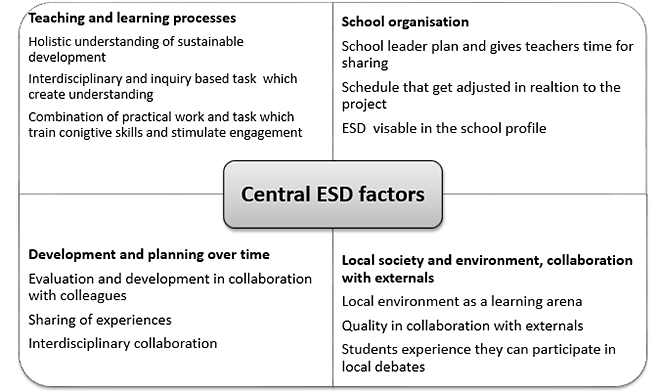A successful initiative
The Sustainable Backpack is a central part of the national initiative aiming to encourage for sustainable development. As many as 17.739 pupils from 114 schools participate in the Sustainable Backpack this school year.
Through the Sustainable Backpack’s ten years history, we believe we have built up a good platform for achieving the overall goal of getting primary and secondary schools to develop a form of teaching that allows pupils to participate actively and influence and contribute to a sustainable future.
This belief is supported by results from the evaluation conducted by NIFU in 2014, showing increased knowledge and engagement for sustainable development among pupils and teachers from the participating schools. Since then, the Sustainable Backpack has developed many additional supportive structures for schools and teachers to design and implement education for sustainable development (ESD) projects.
A flora of exciting school projects
There is a rich diversity of school projects developed by schools participating in the Sustainable Backpack. In average, the schools include five subjects. This multidisciplinary approach provides a rich content and creativity.
For instance, several schools in Moss made a joint exhibition which they named «Marine pollution», where different expressions of art were tied to texts written by the pupils. The pupils have also discussed and reflected on the problems concerning plastic consumption and waste and have written letters to the editor and articles on the subject matter.
The significance of sustainable development in the renewal of the curriculum
In the development of a new curriculum for primary school, secondary school and upper secondary school, there are three interdisciplinary topics, which will have priority in all relevant subjects: democracy and citizenship, sustainable development and public health and life management skills.
Therefore, the Sustainable Backpack, with its success factors, has an important role as the Norwegian Center for Science Education is preparing to assist schools with teaching and learning resources and developing competence in accordance with the renewal of the curriculum.
Factors which can contribute to educating for sustainable development (ESD)
In the Sustainable Backpack we have through evaluations and research found several factors which are important in education for sustainable development. These factors are closely linked to teaching, but they are also related to other parts of school management, such as:
- educational collaboration between teachers in different subjects
- monitoring by the headmaster/school leader
- how the education is related to local environment and local communities
This way, the teachers and the school facilitate the students to explore and spend time on local, complex and controversial matters across multiple subjects. The students get to practice skills such as argumentation, critical thinking, dialogue and ethical awareness and management skills in an interdisciplinary cooperation. Furthermore, the local and authentic issue allows the pupils to participate with an important voice in the public democratic debate with their own opinions, which are professionally grounded. This kind of teaching can help the students gain a deeper understanding of sustainable development.

Background
The Sustainable Backpack is a national priory initiated by the Ministry of Education and Research and the Ministry of Climate and Environment to support Norwegian schools to implement ESD.
The Directorate for Education and Training and The Norwegian Environment Agency are given the responsibility of implementing the Sustainable Backpack in concert with the Norwegian Center for Science Education.
Schools can apply the Sustainable Backpack for support (financial and teacher training) to develop and implement sustainable development projects or programs. By attending the Sustainable Backpack the teachers become a part of a professional learning community for ESD. In these network teachers meet other teachers and their supervisors three times a year.
The first meeting is a national conference for all teachers in the beginning of the school year, followed up by regional network meetings in the autumn and the spring. At these network meetings the teachers get scientific (relevant science topics) and pedagogical content training in addition to supervision on the ESD projects or programs they develop and conduct at their school.
The Norwegian Center for Science Education and the regional supervisors collaborate to develop and implement these networks. Each school can participate for 3-4 years.
Contact information
More information at www.natursekken.no (only in Norwegian)
For further information, contact:
Monica Opsahl: monica.opsal@naturfagsenteret.no
Eldri Scheie: eldri.scheie@naturfagsenteret.no
